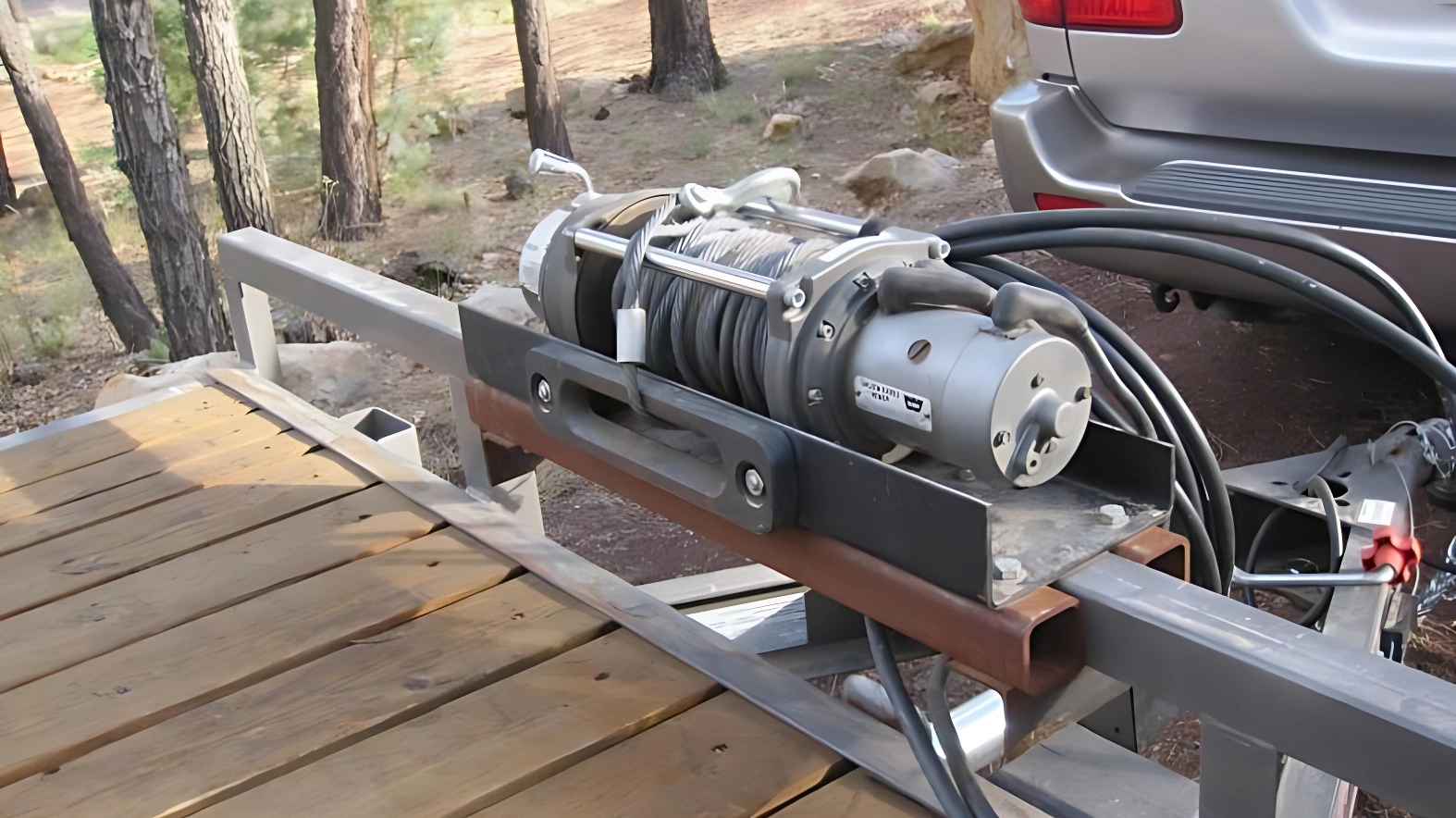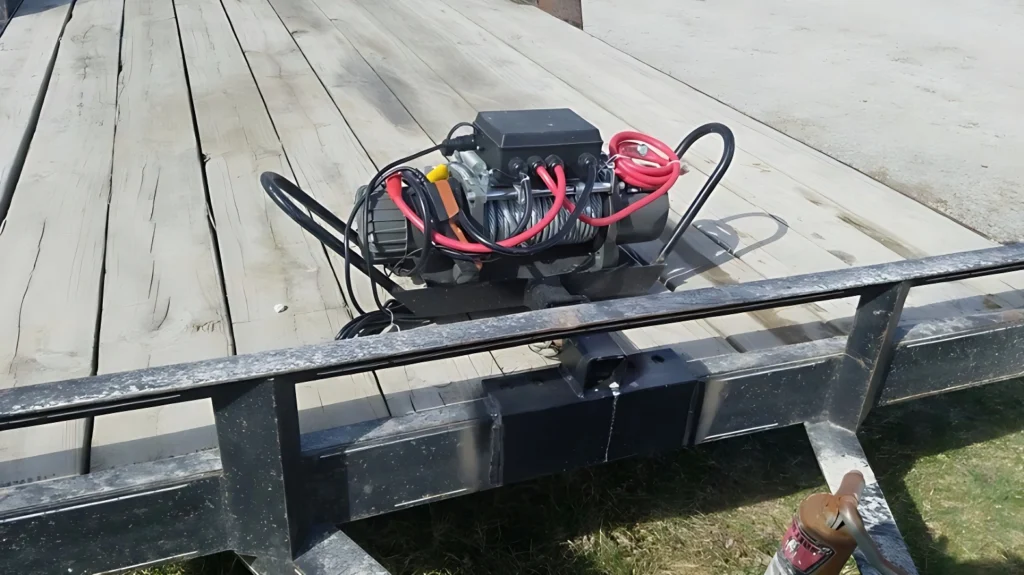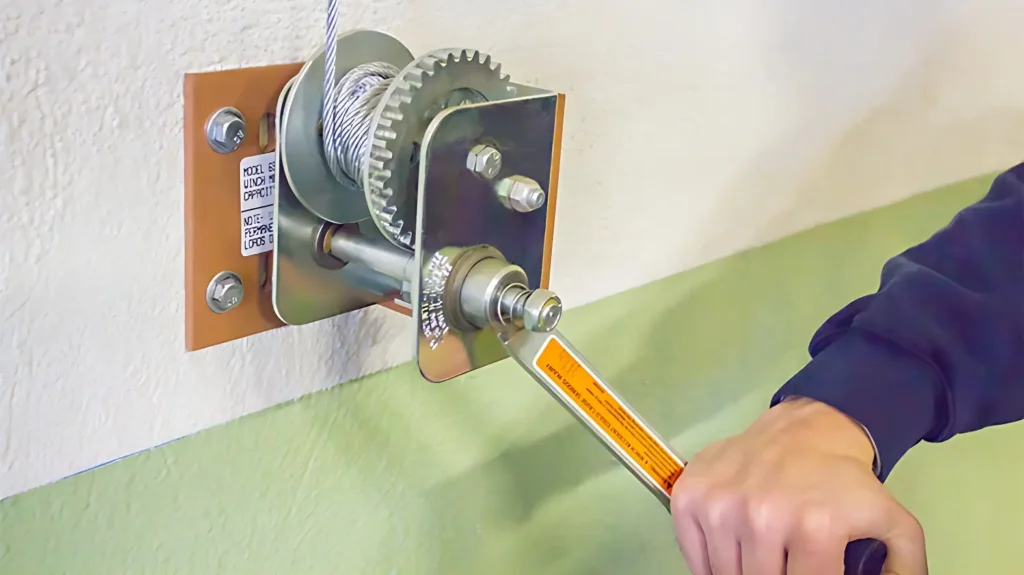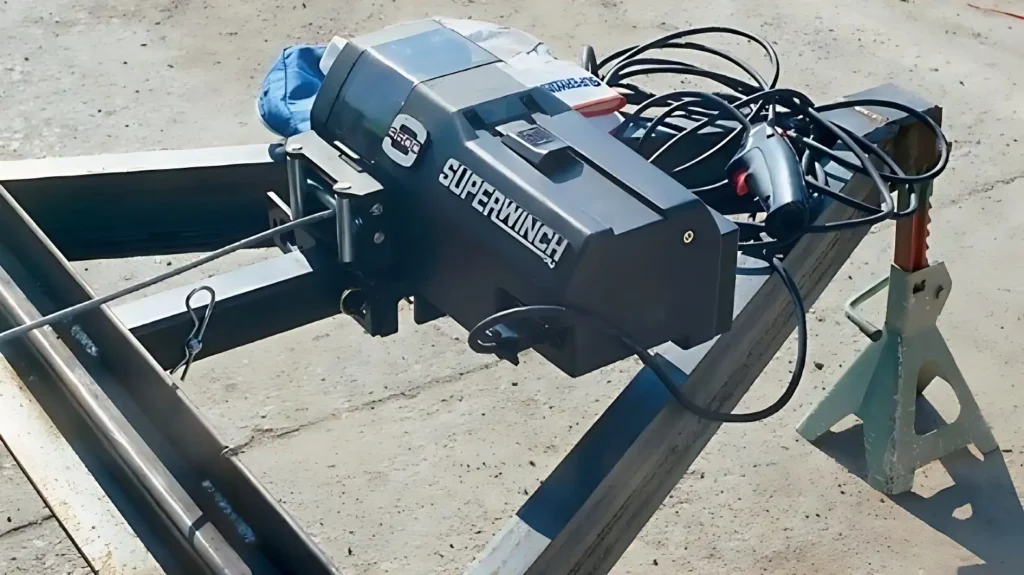Are you in need of a reliable and efficient way to load and unload your car onto a trailer?
Look no further than a winch! A winch is a mechanical device that is used to pull or lift heavy loads.
In this blog post, we will explore the various options for mounting a winch onto your car trailer.
From the traditional bolt-on method to the more advanced quick-release system, we will break down the pros and cons of each method to help you decide which option is best for your specific needs.
12 best car trailer winch mounting ideas
Here are the 12 best car trailer winch mounting ideas:

The traditional bolt-on method:
This is the most common method of mounting a winch onto a car trailer.
It involves drilling holes into the trailer’s frame and bolting the winch onto the frame using heavy-duty hardware.
This method is sturdy and reliable, but it can be time-consuming to install and may require some welding skills.
Quick-release system:
This is a more advanced method that allows for easy installation and removal of the winch.
It utilizes a mounting plate that attaches to the trailer’s frame, and the winch can be quickly attached and detached from the plate using a locking mechanism.
This is a great option for those who frequently need to switch between using the winch and not using it.
Trailer tongue mount:

This method involves mounting the winch onto the tongue of the trailer, which is the part of the trailer that attaches to the hitch of the towing vehicle.
This is a great option for smaller trailers and allows for easy access to the winch controls.
Under-bed mount:
This method involves mounting the winch under the bed of the trailer, which can be a great option for those with limited space on the front of the trailer.
However, it can be difficult to access the winch controls and may require additional modifications to the trailer.
Over-bed mount:
Similar to the under-bed mount, this method involves mounting the winch over the bed of the trailer.
It allows for easy access to the winch controls and is a great option for larger trailers.
Roof mount:
This method involves mounting the winch on the roof of the trailer, which can be a great option for those with limited space on the front or sides of the trailer.
However, it can be difficult to access the winch controls and may require additional modifications to the trailer.
Wall mount:

This method involves mounting the winch on the wall of the trailer.
This can be a good option for those who want to keep the winch out of the way when not in use, but can be difficult to access the winch controls.
Hitch mount:
This method involves mounting the winch onto the hitch of the towing vehicle.
This can be a great option for those who frequently switch between using the winch and not using it, but it can be difficult to access the winch controls.
Custom mount:
This method involves creating a custom mount that fits the specific needs of your trailer and winch.
This can be a great option for those who want a unique and personalized mount, but it can be time-consuming and may require additional fabrication skills.
Rope guide mount:
This method involves mounting a rope guide onto the trailer to help guide the winch rope and prevent it from getting tangled or damaged.
This is a great option for those who use their winch frequently and want to prolong the life of their winch rope.
Remote control mount:
This method involves mounting a remote control for the winch, which can be a great option for those who want to operate the winch from a safe distance.
Electric winch mount:
This method involves mounting an electric winch in place of the manual winch.
This can be a great option for those who want a more efficient and less labor-intensive option.
The electric winch can be powered by the towing vehicle’s battery or by an external power source.
What Is A Good Size Winch For A Car Trailer?

The size of the winch required for a car trailer will depend on the weight of the vehicle being towed.
A good rule of thumb is to choose a winch with a weight capacity that is at least 1.5 times the weight of the vehicle being towed.
Here is a rough chart of recommended winch sizes for different vehicle weights:
- Up to 2,000 lbs: 1,500 lbs capacity winch
- 2,001-4,000 lbs: 3,000 lbs capacity winch
- 4,001-6,000 lbs: 4,500 lbs capacity winch
- 6,001-8,000 lbs: 6,000 lbs capacity winch
It is important to note that these are just general guidelines, the weight of the vehicle being towed, as well as the specific requirements of your trailer.
It’s always better to go for a higher-capacity winch than to risk overloading and damaging the winch or the vehicle.
What to consider before winch mount the car trailer
When mounting a winch on a car trailer, there are several things to consider to ensure proper installation and safe operation:
Weight capacity:
As earlier, make sure to choose a winch with a weight capacity that is at least 1.5 times the weight of the vehicle being towed.
Mounting location:
The winch should be mounted in a position on the trailer that will allow it to be easily accessible and provide good leverage when in use.
It should also be positioned to avoid any potential damage to the winch or vehicle during towing.
Trailer frame strength:
The winch and mounting hardware should be strong enough to support the weight of the vehicle being towed.
If you’re unsure about the strength of your trailer frame, it’s best to consult with a professional.
Power source:
Make sure the winch is properly wired to a power source, such as the trailer’s battery or a portable power pack.
Safety equipment:
Before using the winch, make sure you have all the necessary safety equipment, such as gloves, safety glasses, and a sturdy pair of boots.
Professional help:
If you don’t have experience with welding, drilling, or cutting, it’s best to seek professional help to ensure the winch is properly and safely installed.
Testing:
Before towing any vehicle, test the winch to make sure it is properly mounted and functioning correctly.
This will help you to be sure that you can use the winch safely and effectively when you need it.
FAQ
What Is The Best Location To Mount A Winch On A Car Trailer?
The best location to mount a winch on a car trailer is in a position that is easily accessible and provides good leverage when in use.
It should also be positioned to avoid any potential damage to the winch or vehicle during towing.
Can A Winch Be Mounted On A Car Trailer That Has A Weak Frame?
A winch and mounting hardware should be strong enough to support the weight of the vehicle being towed.
If you’re unsure about the strength of your trailer frame, it’s best to consult with a professional.
What Type Of Power Source Is Needed For A Car Trailer Winch?
A car trailer winch should be properly wired to a power source, such as the trailer’s battery or a portable power pack.
What Safety Equipment Is Necessary When Using A Car Trailer Winch?
When using a car trailer winch, it is important to have gloves, safety glasses, and a sturdy pair of boots.
Is Professional Help Necessary For Mounting A Winch On A Car Trailer?
If you don’t have experience with welding, drilling, or cutting, it’s best to seek professional help to ensure the winch is properly and safely installed.
How Can I Test The Winch On My Car Trailer To Ensure It’s Working Properly?
Before towing any vehicle, test the winch to make sure it is properly mounted and functioning correctly.
This can be done by manually pulling on the winch cable or by attaching it to a test load.
Conclusion
Mounting a winch on a car trailer can be a great addition to towing vehicles.
However, it’s important to ensure proper installation and safe operation by considering the weight capacity, and mounting location.
The other factors are trailer frame strength, power source, safety equipment, and professional help if needed.
It’s also important to test the winch before towing any vehicle to ensure it is properly mounted and functioning correctly.
By taking these steps, you can ensure that your winch is working correctly and will be able to safely tow vehicles when needed.
